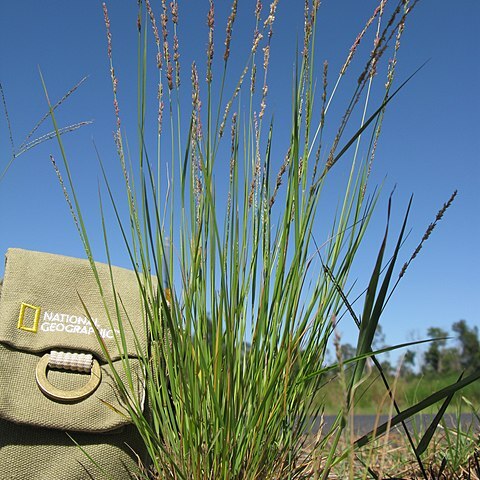Compactly tufted perennials; base leafy. Culms erect, 21–90 cm high. Leaves ±glabrous except near ligule; ligule a fringe of hairs, 0.3–0.4 mm long; blade involute to convolute, 10–21 cm long, to 4 mm wide, scaberulous on margins. Axillary spikelets often present. Panicles spiciform with spikelets in compact interrupted clusters or (less commonly) open, (3–) 8–23 (–34) cm long, 0.5–4 cm wide, scabrous; branches divided, spikelet-bearing for entire length. Spikelets sessile, ovate to oblong, compressed, 3–12 (–20) mm long, 1.5–2.5 mm wide, often glaucous or pruinose; rachilla flexuose, stout; florets 6–27, finally loosely overlapping, with a median depression. Glumes deciduous, ±equal, linear to lanceolate, 1–2 mm long, cartilaginous to indurated, with a prominent scabrous keel. Lemma ovate or elliptic, 1.5–2 mm long, acute, curved on back, often mucronulate from a ribbed keel, cartilaginous to indurated, granular-papillose. Palea membranous to cartilaginous, granular; body spathulate or oblanceolate-elliptic; keels scabrous with unequal hairs; flaps narrow. Stamens 2 (–3); anthers 0.2–0.3 mm long. Grain scarcely compressed, ovoid-ellipsoid, 0.4–0.7 mm long, acute at base and apex, sometimes silvery striate.
More
Perennial. Culms erect, loosely tufted, 20–90 cm tall, 0.5–1 mm in diam., 2–4-noded. Leaf sheaths usually shorter than internodes, glabrous; ligules 0.3–0.4 mm; leaf blades flat to involute, adaxial surface scabrous, sometimes hairy below, 5–21 cm × 1–3 mm. Panicle spicate to narrowly ovate, 5–30 × 1–4 cm; branches appressed or diverging up to 80° from the rachises with spikelets at base. Spikelets stramineous to greenish or light brown, 3–12(–20) × 1.5–2.5 mm, 6–25-flowered; subsessile or with a very short pedicel, rachilla fragile. Glumes linear-lanceolate to lanceolate, 1-veined, 0.8–2 mm. Lower lemmas lanceolate to ovate, 1.3–2.2 mm. Palea shorter and narrower than the lemmas, hyaline, 1.1–1.7 mm, ciliolate along keel. Stamens 2; anthers 0.2–0.3 mm. Caryopsis cinnamon, ovoid-ellipsoid, 0.4–0.7 mm, smooth to finely reticulate.
Grows on a wide range of soil types, often in or near alluvial, wellwatered habitats, also on beach dunes, in rocky gullies, and on disturbed sites.

